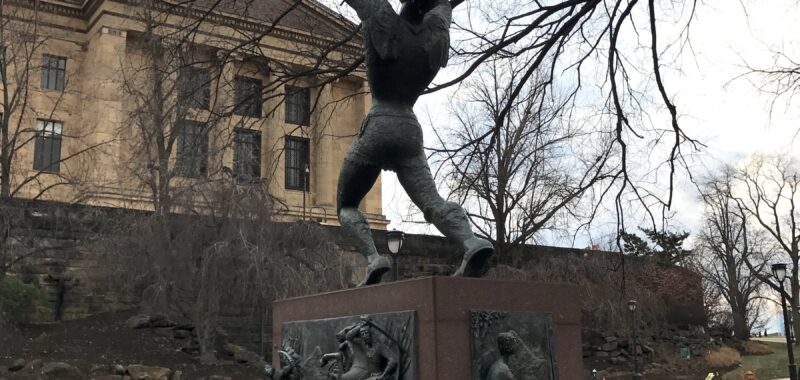Fifty years after Philadelphia’s “Young Meher” statue was first erected by Armenian-Americans on the United States Bicentennial, the heroic figure will be at the center of a new permanent public art exhibition slated for a 2026 unveiling. The Armenian Heritage Walk will be positioned in front of the Philadelphia Museum of Art (PMA).

The news of the forthcoming commemorative space comes as experts warn of a “cultural genocide” as the Azerbaijani regime destroys Armenian churches and other heritage sites in Artsakh (also known as Nagorno-Karabakh). Over 100,000 Armenians were forcibly displaced from their homeland last September, and a recent report from the Caucasus Heritage Watch found a 75% increase in destroyed burial grounds, sacred places, and other sites since fall 2023.
The Armenian Heritage Foundation of Philadelphia, a group created to oversee the project, announced the walkway in March. Last November, the city’s art commission issued a final approval on the public project installation in front of the PMA.
This month the group will begin procuring materials needed to begin construction by spring 2025, according to its website.
The idea for the public outdoor gallery began as an effort by Armenian community members to renovate the “Young Meher” statue, created in 1975 and originally unveiled the following year during a ceremony attended by over 2,000 people. Young Meher, as the Armenian folktale goes, was imprisoned in a cave, refusing to leave until justice was brought to Armenia. The epic hero represents Armenian strength in the face of plight. The sculpture’s artist, Khoren Der Harootian, fled to the United States in 1921 after 23 of his family members were murdered in the Armenian Genocide.
The monument itself commemorates the “invincible faith” of the people of Armenia, the first nation to accept Christianity in 301 CE, according to a plaque.

In the first phase of construction for the outdoor space, the figure of Young Meher and its supporting relief panels depicting various Armenian Christian imagery will be restored and repaired. This phase will also create a winding walkway meant to slow foot traffic to encourage reflection, spaces for future public art, and landscaping paying homage to Armenian geography. Phase II, to be implemented at a later date, will include public art exhibitions along the walk.
The Philadelphia exhibition is not the first Armenian heritage walk to crop up in the United States.
Boston’s Armenian Heritage Park, which officially opened in 2012, features a labyrinth celebrating the journey of immigrants to Boston, Armenian or not. The park is also home to an abstract sculpture by fabrication group A&A Industries that memorializes those killed in the Armenian Genocide.

Like the walkway in Boston, the new Philadelphia outdoor display will celebrate the United States as a second home to Armenians.
The original unveiling of “Young Meher” in 1976 was replete with American flags. The revived mission statement of the Armenian Heritage Walk reaffirms that sentiment: “We Americans of Armenian descent express our gratitude to the United States of America for the sanctuary, freedom, and opportunities this great country has afforded us all.”
While the PMA is not financially involved in the creation of the outdoor gallery, a spokesperson for the museum said it would continue to be in conversation with the Armenian Heritage Foundation of Philadelphia as the project comes to fruition.
“We’re happy to let our visitors know about the walk and encourage them to enjoy it,” a PMA spokesperson told Hyperallergic.

